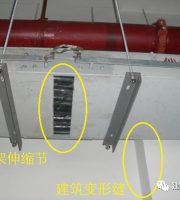What is the thermal insulation mortar with expanded glass beads? Expanded glass bead thermal insulation mortar is a new type of inorganic thermal insulation mortar material, which takes expanded glass bead as light aggregate and rubber powder in a certain proportion
.
The expanded glass bead thermal insulation mortar has excellent thermal insulation performance, fire resistance and aging resistance, no hollowing and cracking, high strength, and can be used after mixing with water in site construction
.
Base treatment: the wall should be cleaned, no oil, no floating dust, etc
.
The loose and weathered parts of the old wall surface shall be removed, and the surface raised part ≥ 10mm shall be leveled
.
2
.
Concrete must be aerated at the interface of beam and column
.
3
.
Hang vertically, set the square to find the rules, snap the thickness control line, and use the expanded vitrified micro bead thermal insulation mortar as the standard thickness punching bar according to the design thickness
.
4
.
Mixing: according to the weight ratio of [1: (1 ~ 1.1)], the water must be put into the mixing container first, and then the thermal insulation mortar must be put into the mixing tank for use
.
5
.
The thickness of each pass is within 20 mm, and the interval of the second pass is more than 24 hours
.
6
.
The polymer anti crack mortar can be applied only after the insulation layer is cured and dried (generally 48 hours), and the first layer shall be paved with double-layer grid cloth
.
7
.
The wire mesh cloth shall be loaded in advance according to the vertical size between floors, and the edge of the mesh cloth shall be cut off
.
8
.
The thickness of polymer anti crack mortar is about 3 ~ 4mm
.
After plastering a certain width, immediately press it into the other side with an iron trowel
.
Dry construction is strictly prohibited
.
9
.
The lapping width between grid cloth shall not be less than 50 mm
.
When pressed into one side, some anti crack mortar shall be plastered and pressed into the other side
.
Dry lapping is strictly prohibited
.
10
.
The grid cloth shall be laid flat without folds, and the mortar plumpness shall reach 100%
.
11
.
The window should be turned over and closed, and 200 mm × 400 mm glass drill should be added at the stress concentration position of the four corners of the window for strengthening treatment
.
12
.
Waterproof treatment shall be made between external thermal insulation system and door and window frames
.
13
.
According to the design requirements and the renderings inside the building, after snapping the line, use wallpaper knife and special tools to open the set groove along the line
.
14
.
The groove is embedded with polystyrene or round bar and waterproof sealant to form corresponding concave joint
.
15
.
The internal and external corners shall be square, the groove shall be flat, the joint and plane plastering shall be carried out at the same time, and the mesh cloth shall be lapped in the middle of the joint
.
16
.
Method of ceramic tile surface: change the mesh cloth into hot-dip galvanized wire mesh and anchor nail, the others are the same
.
Precautions: 1
.
The slurry must be ready for use, and the prepared slurry should be used up within 2 hours
.
It is strictly forbidden to add water for the second time
.
2
.
The prepared anti crack mortar must be stirred for 5 minutes and must be evenly stirred
.
3
.
The prepared anti crack mortar must be used within 1-2 hours
.
Construction technology of three expansion vitrified bead thermal insulation mortar 1
.
Working conditions 1
.
1 the base wall meets the quality standard requirements after the main project acceptance
.
1.2 the surface of the base course shall be cleaned of the floating dust, oil and grease isolating agent and the sundries in the corner, and the protrusions larger than 10 mm shall be removed and leveled
.
1.3 the old coating of the building wall should be thoroughly cleaned, and the defects should be repaired, reinforced and leveled
.
1.4 the door and window frame rainwater pipe clamp embedded iron parts on the external wall, the equipment through the wall pipe, etc
.
shall be installed in advance, and the thickness of the external insulation layer shall be reserved, and the gap shall be caulked according to the regulations
.
1.5 the hanging basket or special scaffold for construction shall be erected firmly and the safety inspection shall be qualified
.
The distance between the horizontal and vertical poles and the wall corner shall meet the construction requirements
.
1.6 when the construction environment temperature is lower than 5 ℃, winter construction measures shall be taken on site
.
Avoid sun exposure in summer
.
It is strictly forbidden to carry out construction in rainy and snowy days and when there is a force five wind or above
.
1.7 the construction organization design or construction scheme shall be prepared for the construction of glazed bead thermal insulation mortar, which can be implemented only after the approval of the supervision (construction) unit
.
2
.
Material preparation 2.1 preparation of interface mortar: according to the interface agent: medium fine sand (dry): Cement = 1:1:1 (mass ratio), first add interface agent, then add medium fine sand and cement, mix evenly to form slurry
.
2.2 preparation of glazed bead thermal insulation mortar: according to the slurry: water = 1-1.1 (weight ratio), add water into the mixing container first, and then put the dry powder of glazed bead thermal insulation mortar into the mixing container, and mix for 3-5min to make the slurry into a uniform paste, which can be used
.
The slurry must be used as it is prepared
.
The prepared slurry should be used up within 2 hours, and should not be recycled and used again with water
.
2.3 preparation of anti crack mortar: according to the water required for slurry: dry mixture = 0.20-0.25:1 (mass ratio), put the water into the mixing container first, and then pour the dry mixture of anti crack mortar into the mixing container, mix for 4-5min, make the slurry into a uniform paste, and let it stand for 5min
.
The prepared slurry should be used up within 1.5h
.
3
.
The technological process of glazed bead thermal insulation mortar external wall thermal insulation project should meet the following requirements: cleaning the base wall, hanging vertical, square, snapping plastering thickness control line, brushing interface mortar, making ash cake and punching reinforcement, plastering glazed bead thermal insulation mortar, snapping dividing line and opening dividing groove, acceptance of thermal insulation layer, plastering anti crack mortar and pressing alkali resistant mesh at the same time
.
4
.
Construction requirements 4.1 treatment of base wall: first remove the floating ash and oil stains on the base wall with wire brush, and then clean them with soft brush
.
The thermal insulation mortar shall be used to fill the surrounding of the door and window frame in layers, and the size of the window frame wrapped by the thermal insulation layer shall be controlled within 10 ~ 20 mm
.
4.2 hang the vertical sleeve and snap the plastering thickness control line: pop up the plastering control line according to the thickness requirements of the insulation layer
.
4.3 brushing interface mortar: use roller brush or broom to dip interface mortar evenly on the wall, without missing scraping, and the roughening should not be too thick
.
Pay attention to sun protection and wind protection for the prepared materials, and the amount of one-time preparation should be used up within the operational time
.
4.4 mortar cake punching: use slightly dry vitrified micro bead thermal insulation mortar to make mortar cake punching
.
4.5 glazed bead insulation mortar: the glazed bead insulation mortar shall survive several times before the interface mortar is dried and solidified
.
1) The first plastering: on the base wall after brushing the interface mortar, the prepared vitrified micro bead thermal insulation mortar should be used for plastering, and the plastering thickness should not be greater than 20 mm, so that the mortar can cover the wall surface evenly and compactly
.
After the glazed bead insulation mortar is plastered on the wall and adhered to the wall, it is not suitable to press repeatedly
.
2) Second plastering: when the plastering thickness is greater than 20 mm, it shall be plastered several times
.
After the previous plastering is hardened, the next plastering can be carried out
.
The thickness of the last plastering should reach the thickness of the mortar cake punching bar, and it should be rubbed flat with a large bar
.
After the perpendicularity and flatness of the door and window openings meet the specification requirements, the surface shall be leveled and compacted
.
4.6 acceptance of insulation layer: after plastering the insulation layer, it shall be inspected with testing tools
.
The insulation layer shall be vertical and flat, and the internal and external corners shall be square and straight
.
4.7 press in alkali resistant mesh when plastering anti crack mortar: after the insulation layer is solidified and dried, use iron trowel to plaster anti crack mortar on the insulation layer, the thickness is required to be 3-4mm, and no missing plastering is allowed
.
Press in the cut alkali resistant mesh with iron trowel on the newly plastered mortar, and the alkali resistant mesh is required to be vertically paved and all pressed into the anti crack mortar
.
The alkali resistant mesh shall not have dry sticking, the pasting fullness shall reach 100%, and the overlapping width shall not be less than 100 mm
.
The two layers of overlapping mesh shall be covered with anti crack mortar, and dry stubble overlapping is strictly prohibited
.
At the corner of the door and window, a layer of alkali resistant mesh should be laid obliquely at the corner of the opening
.
The size of alkali resistant mesh should be 400 mm × 300 mm
.
4.8 reinforcing layer method: the outer corner of the first layer of external insulation shall be protected with alkali resistant mesh
.
The internal and external corners of other layers and the corners of door and window openings are overlapped and strengthened with alkali resistant mesh.
.


